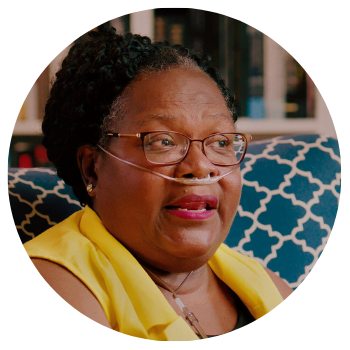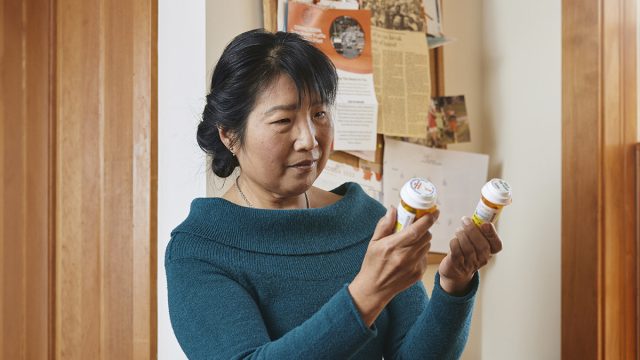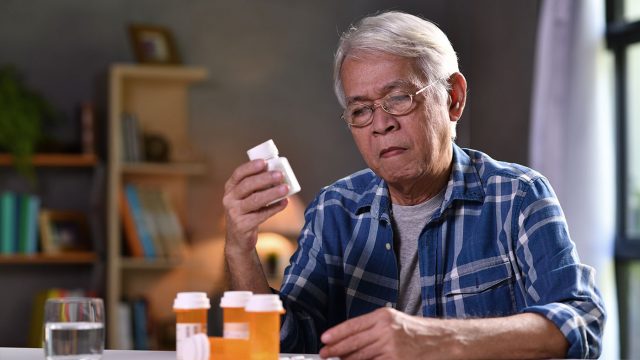The Medicare Part D reforms passed as part of the Inflation Reduction Act—including a $2,000 out-of-pocket cap for prescription drugs that will go into effect in 2025—are important steps toward addressing healthcare access, affordability, and equity.
However, while the PAN Foundation celebrates these historic reforms, we know it’s not enough. Our polling and analysis reinforce that even with these reforms, many patients enrolled in Medicare Part D will continue to struggle with their out-of-pocket prescription drug costs.
Charitable assistance from the PAN Foundation will continue to be a lifeline for many with high out-of-pocket medication costs.
Kevin L. Hagan, PAN Foundation President and CEO
Patients share their stories about the need for charitable assistance
For the 53 million adults in the U.S. enrolled in Medicare Part D, their out-of-pocket costs for prescription medications are just one part of their overall cost of care. This also doesn’t account for their other living expenses, such as housing/rent, food, utilities, clothing, or transportation.
Since individuals enrolled in Medicare Part D and other federally funded insurance programs are unable to use manufacturer assistance, they must rely on independent charitable patient assistance foundations, like the PAN Foundation, to serve as a safety net when they can’t afford their medications.
National research and polling finds many will continue to struggle to afford their medications
Through in-depth research by Avalere and its own national polling, the PAN Foundation’s Center for Patient Research has been at the forefront of understanding how these Medicare Part D reforms may impact patients. The results of this national research and polling reinforce the fact that far too many patients will continue to face affordability challenges, despite the historic reforms.
Avalere research: Changes in healthcare plans impacting access for Medicare patients (2024)
- About 12 percent of standalone prescription drug plans offered in 2023 were not available in 2024, impacting about 400,000 enrolleees.
- In 2024, approximately 3.2 million people enrolled in Medicare had to either choose a new plan or pay a premium because 31 percent of 2023 standalone prescription drug plans lost low-income subsidy benchmark status in 2024.
- Formulary coverage was lower in for drugs in some therapeutic areas examined, while remaining the same or increasing in others.
- Patients in some key therapeutic areas examined saw a substantial increase in the use of coinsurance in 2024 when compared to 2023.
Avalere research: Impacts of the Medicare Part D reforms on patient affordability (2023)
- More than 2.6 million adults in Medicare Part D are projected to have out-of-pocket spending high enough to reach the new $2,000 annual cap when it comes into effect in 2025.
- About 800,000 beneficiaries in 2024 and more than 200,000 beneficiaries in 2025 are projected to spend more than 10 percent of their income on prescription medications each year.
- Given that most of their out-of-pocket spending comes toward the end of the year, certain populations—including Hispanic, Black, and Asian beneficiaries—may experience limited benefit from the 2025 out-of-pocket smoothing reform, now known as the Medicare Prescription Payment Plan.
Avalere research: Impacts of Medicare Part D reforms on patient behavior and medication adherence (2023)
- When looking at beneficiaries within only eight key therapeutic areas, anywhere from about 182,000 to 410,000 people will likely spend more than 10 percent of their estimated annual income on out-of-pocket costs for prescription medication each year. This leaves them effectively underinsured and at increased risk of delaying or forgoing treatment.
- The vast majority of patients taking medication for an autoimmune condition (94 percent), multiple sclerosis (89 percent), and HIV (87 percent) will have out-of-pocket spending of more than $1,750 in 2025.
- The number of 30-day prescriptions for drugs within the eight therapeutic areas examined are projected to increase between 2 to 28 percent following implementation of the 2025 reforms, which points to more patients starting and staying on their prescribed medications.
National polling: Financial burden of out-of-pocket costs and impact of Part D cap for adults on Medicare (2022)
- About 75 percent of those polled said that it would be difficult to afford $2,000 in annual out-of-pocket costs for their prescription drugs.
- Concerns were especially high among Black and Hispanic adults, adults with incomes under $50,000, and adults with chronic or rare diseases.
- About 60 percent of respondents whose current annual prescription drug costs don’t exceed $2,000 said they would cut back on food-related expenses if faced with that total.

75 percent of adults surveyed would find it difficult to afford $2,000 in out-of-pocket prescription costs.
Source: PAN Foundation national poll. October 2022
Despite Medicare reforms, charitable assistance programs are still needed
When individuals with life-threatening, chronic, and rare diseases face high out-of-pocket costs, far too many choose to delay or go without their prescribed medications. And while these impending Medicare Part D reforms will bring relief to many, we know others will continue to struggle.
That’s why the PAN Foundation will continue to be there for thousands of patients across the country each year. By helping them with their out-of-pocket costs for prescription medications, we allow these patients to focus on what matters most—receiving the treatment they need and deserve. PAN is also committed to continuing to advocate for improved healthcare access, affordability, and equity so that all people can live the life they deserve.




